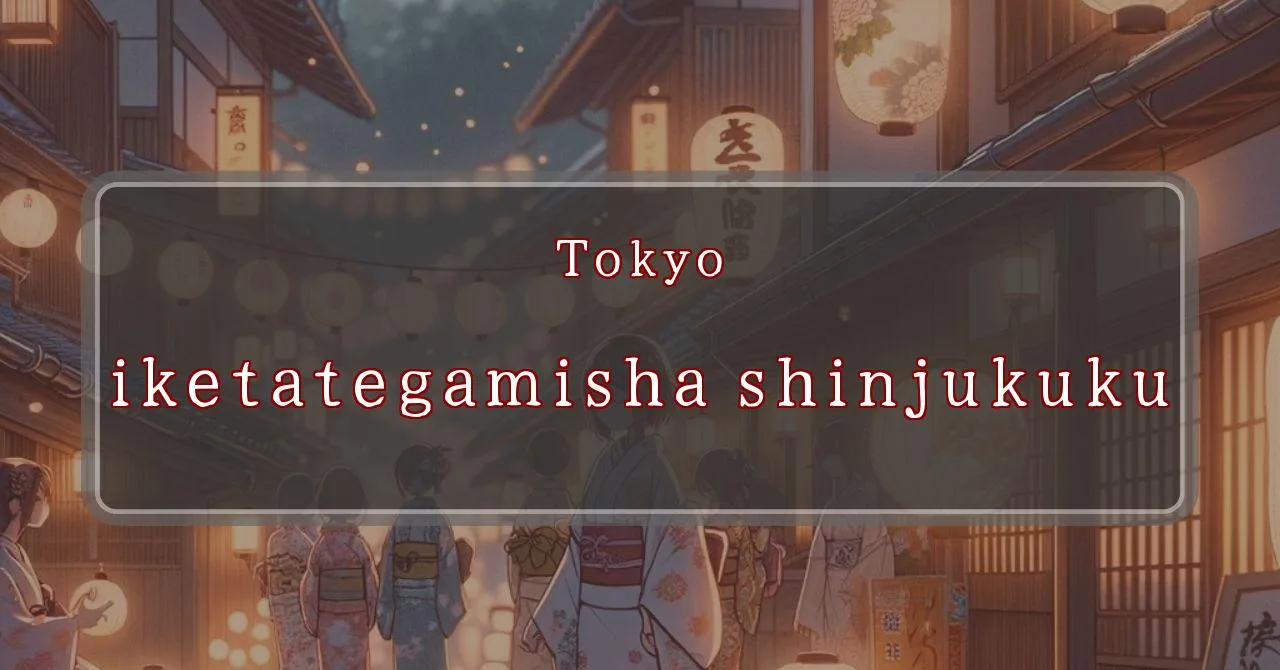Enchanting melodies and vibrant hues at Ikedate Shrine
Basic Information
Ikedate Shrine is a Shinto shrine located in the Shinjuku Ward of Tokyo, Japan. It is dedicated to the deities of agriculture, industry, and commerce, and is known for its annual festival held on May 4th.
- Address: 20-36, Kikuicho, Shinjuku-ku, Tokyo 162-0044
- Phone Number: Not available
- Access: A 10-minute walk from Waseda Station on the Tokyo Metro Tozai Line
- Festival Days: May 4th, 2024
Main Events and Attractions of the Festival
The Ikedate Shrine Festival is a vibrant and lively event that attracts many visitors each year. The main events and attractions of the festival include:
Mikoshi Procession
The mikoshi procession is a highlight of the festival. A mikoshi is a portable shrine that is carried through the streets by a group of people. The mikoshi is believed to be the temporary dwelling of a deity, and the procession is a way to transport the deity to different locations so that it can bless the people and the land.
Shishimai Dance
The shishimai dance is a traditional Japanese lion dance. The dance is performed by two people, one inside the lion costume and one outside. The lion is believed to be a guardian spirit, and the dance is a way to bring good luck and ward off evil spirits.
Kagura Performance
Kagura is a traditional Japanese performing art that combines music, dance, and storytelling. Kagura performances are often held at Shinto shrines, and they are a way to entertain the gods and goddesses and to ask for their blessings.
Food Stalls
A variety of food stalls are set up at the festival, offering a wide range of delicious Japanese dishes. Some of the most popular foods include takoyaki (octopus balls), yakisoba (fried noodles), and taiyaki (fish-shaped cakes filled with sweet red bean paste).
Games and Activities
There are also a number of games and activities for children and adults to enjoy at the festival. These include traditional Japanese games such as ring toss and goldfish scooping, as well as more modern games such as face painting and balloon animals.
Blessings and Deities
The deities enshrined at Ikedate Shrine are:
- I
- 武甕槌命 (Take Mikazuchi no Mikoto)
- 経津主命 (Futsunushi no Mikoto)
- 天児屋根命 (Ame no Koyane no Mikoto)
- 姫神 (Himegami)
Safe childbirth
Origin and History
Ikedate Shrine was founded in the early Edo period by Ikeda Kiyonao, a retainer of Tokugawa Ieyasu. The shrine was originally located in the Ikedate district of Shinjuku, but it was moved to its current location in 1886.
The shrine has a long and rich history, and it has been visited by many famous people over the years. In 1634, the shrine was visited by the emperor Go-Mizunoo, and in 1868, it was visited by the emperor Meiji.
Tips and Notes for Visitors
If you are planning to visit Ikedate Shrine, here are a few tips and notes to keep in mind:
- The shrine is open every day from 9:00 AM to 5:00 PM.
- Admission to the shrine is free.
- There is a small parking lot available for visitors.
- The shrine is a popular tourist destination, so it is best to visit during the off-season (November to March) if you want to avoid the crowds.
- There are a number of restaurants and shops located near the shrine.
Parking Information
There is a small parking lot available for visitors to Ikedate Shrine. The parking lot is located on the east side of the shrine, and it can accommodate up to 10 cars.
The parking lot is free of charge, but it is available on a first-come, first-served basis.
Popular Stalls and Food Carts in Recent Years
| Type of Stall | Description |
|---|---|
| Takoyaki | A staple at Japanese festivals. Characterized by a crispy outside and a creamy inside. |
| Jaga Butter | A simple yet popular snack of hot potatoes lavishly topped with melted butter. |
| Baby Castella | Small castella cakes, sweet and fluffy treats enjoyed by children and adults alike. |
| Grilled Ayu with Salt | Fresh ayu fish grilled whole with salt, a savory taste of Japanese summer. |
| Shaapin | A unique gourmet item influenced by foreign cuisine, with a chewy skin wrapping the filling. |
| Okonomiyaki | A Japanese grilled dish where you often choose your own ingredients for a personalized flavor. |
| Cotton Candy | A fluffy, sweet snack that’s extremely popular with children. |
| Chocolate Banana | A banana coated in chocolate, a fun and visually appealing dessert. |
| Kushiyaki | Various types of ingredients skewered and grilled, an easy-to-enjoy snack. |
| Yakisoba | Fried noodles mixed with a special sauce, a fast food favorite in Japan. |



